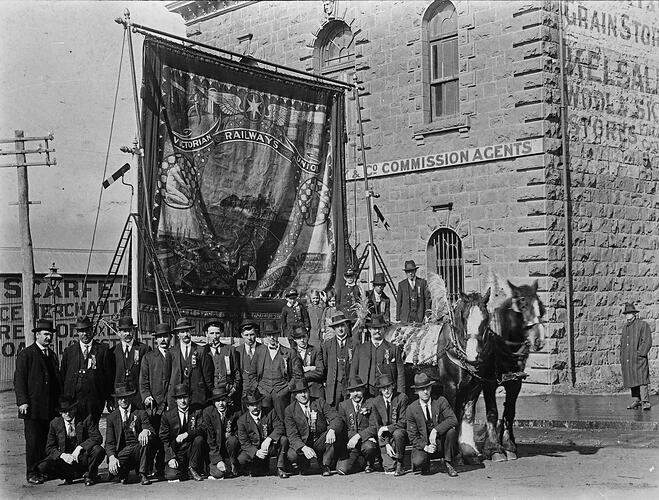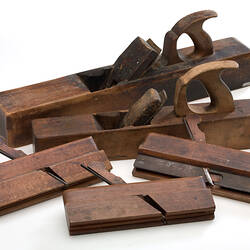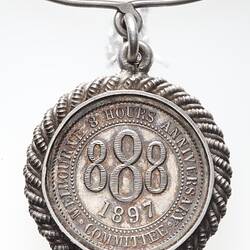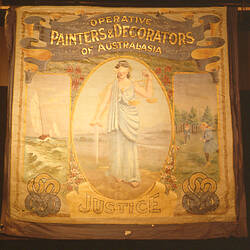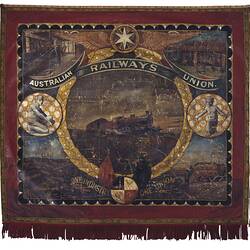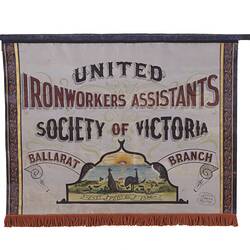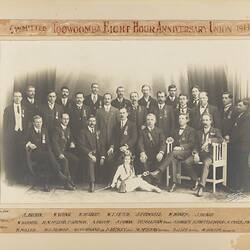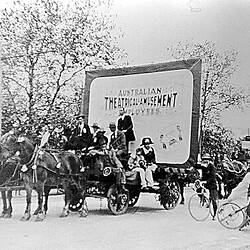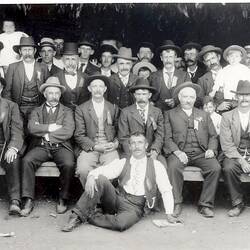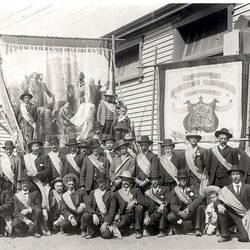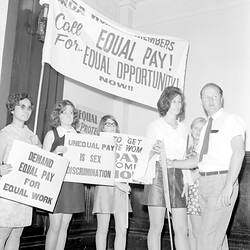Summary
History of the Australian trade union movement.
The first Australian unions were formed by free workers (non-convict labourers) in Sydney and Hobart in the late 1820s. Unions spread across the country from the late 1830s. Between 1850 and 1869 about 400 unions were formed in Australia. These early unions represented craft-based workers such as stonemasons and carpenters, as well as informal combinations of craftsmen and other workers such as shop assistants, labourers and miners. Many of these trade unions were formed to assist members during illness, death and unemployment. Other unions combined social welfare assistance with campaigning for improved wages and working conditions.
However, many of these early unions were short-lived. Unionism picked up again in the 1850s as workers rallied for the eight-hour work day. Workers outside the craft industry, such as road transport workers and miners, also began to organise.
Women became active in the union movement from the 1870s, often forming separate unions.
The growth of unions increased in the 1880s as trade and labour councils played a greater role in mediating disputes between workers and employers. Union presence in the political arena increased when labour councils formed electoral leagues, leading to the formation of the Australian Labor Party. Union membership increased and by 1890, 200,000 Australian workers were part of a union.
The 1890s challenged the growing strength of the Australian labour movement. Union membership fell drastically due to the economic depression and union defeat following a series of strikes. Many small and recently formed unions collapsed as a result.
The introduction of compulsory arbitration in the early 20th century assisted in recovering union numbers. The arbitration system established minimum wages and conditions and encouraged employers to consult with unions. This led to the establishment of the Australian Council of Trade Unions (ACTU) in 1927.
Although unions suffered industrial defeats and membership losses during the 1930s Great Depression, they recovered during World War II. The trade union movement in the post-war era was characterised by increased militancy and the presence of the Communist Party. Although communist influence strengthened the labour movement, it also led to bitter struggles between pro and anti-communist unionists.
Many achievements were made by the trade union movement during the post-war era, including reduced work hours and equal pay. Unions also began addressing other social issues such as Indigenous rights, gender discrimination and migrant welfare. Furthermore, they turned their attention to political causes including apartheid, the Vietnam War and environmental and heritage preservation.
Unions faced increasing challenges as the 20th century progressed. From the 1980s onwards, they had to deal with the effects of privatisation, deregulation, the modification of industrial laws and the increasing presence of casual workers and contractors.
- References
- Sandercock, S & I. Turner 1983, In Union is Strength: A History of Trade Unions in Australia, 1788-1983, Thomas Nelson Australia, Melbourne.
- Scalmer, S 2006, The Little History of Australian Unionism, The Vulgar Press, Carlton North.
- Quinlan, M 2001, 'Trade Unions', in G. Davison, J. Hirst & S MacIntyre (eds), Oxford Companion to Australian History, Oxford University Press, South Melbourne.
More Information
-
Keywords
-
Authors
-
Article types
